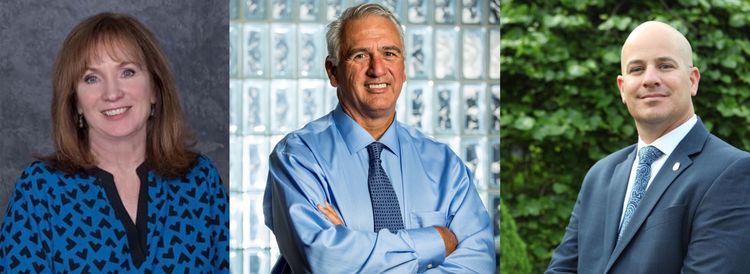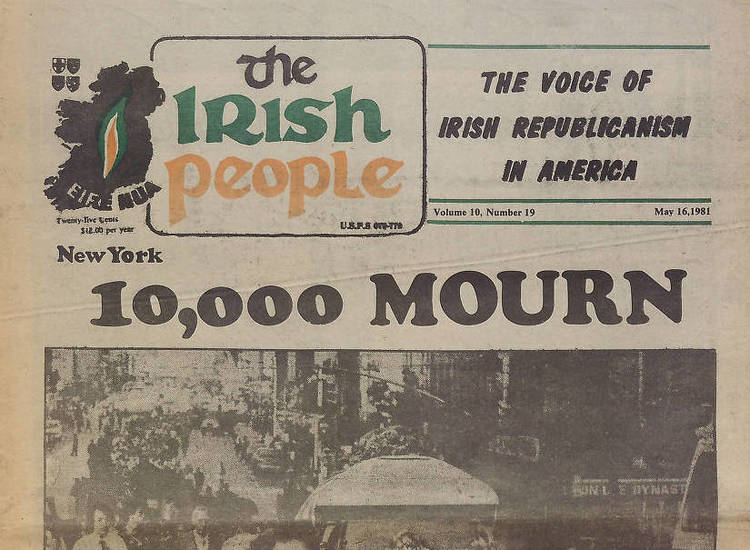Martin O’Malley
By Ray O’Hanlon
The first days of a new year are typically slow news days.
At the beginning of this year, Martin O’Malley gave the Baltimore Sun something to write about as a result of himself being slow.
The former governor of Maryland and 2016 Democratic presidential candidate was wanted by his home state to pose for his official gubernatorial portrait.
Only he wasn’t anywhere to be found.
Wrote Michael Dresser in the Sun report: “During eight years as governor, Martin O’Malley earned a reputation for tardiness in convening meetings of the Board of Public Works. Delays of 20 to 30 minutes were common.
“Nearly three years after leaving office, in the same room where the board meets, O’Malley is still running late.”
Dresser reported that it was a State House tradition to display the portraits of Maryland’s eight most recent governors on the walls of the Reception Room on the second floor of the historic capitol.
“But on the wall opposite where Gov. Larry Hogan presides over the public board meetings, O’Malley is absent.”
There was a clue in the next few lines as to why O’Malley was AWOL from the wall.
“O’Malley, who keeps up a rigorous schedule of political appearances on behalf of Democratic candidates around the country, hasn’t gotten around to having his portrait painted yet, according to a spokesman.
“The former governor is lagging well behind the pace set by other recent governors.”
That’s not to say that O’Malley is lacking for political pace, even in an off-cycle in election terms.
So much pace in fact that posing for a portrait is, right now, an idea that is, well, off the wall.
O’Malley’s peripatetic wanderings are not entirely impossible to track.
There is a trail of emails, electronic breadcrumbs in the political thicket.
Since he failed to secure his party’s nomination in 2016, wasn’t chosen by Hillary Clinton as a vice presidential partner, and following Donald Trump’s victory O’Malley has thrown himself into every other election of consequence and, in not a few cases, of no apparent consequence at all.
O’Malley has been something akin to a political jack-in-the-box for his party, popping up here, there and everywhere in support of candidates running for every office ever heard of, and one or two that yet elude the political science lexicon.
And there are the emails.
They begin with the same word every time: “Friend.”
And what follows can be this: “While Republicans continue to tear away at our social fabric, I will continue to travel across the country and campaign for pro-health care Democrats. Yesterday, I was in Ohio raising money for state and local Democrats, and this Monday, I will fly to Dallas, Texas to keynote their annual Democratic Party dinner…Chin up, Eyes forward!”
And this: “I want to follow up with my email from yesterday to let you know that I will be traveling to South Carolina this Saturday to help elect Archie Parnell to Congress! This is a major chance for our Party to flip a Republican seat to Democratic control. The seat was held by Democrats up until 2010 - and polls show the race tightening as we speak! Can I count on you to chip in another $3 for Archie?”
Or this: “Kevin Cavanaugh is running for the New Hampshire State Senate, and he needs our help. The previous Democrat won this seat by just 615 votes - a mere 2%. Now Republicans are going all out to flip this seat, and they've already begun launching attacks against Kevin. Kevin needs our help. Can I count on you to donate directly to Kevin's campaign?”
And this: “Last week, I was fortunate enough to meet one of New Hampshire’s brightest rising young leaders, Hassan Essa. Hassan is running a truly inspiring campaign for Alderman and he needs your help. Hassan has been a Manchester resident ever since fleeing Kuwait as a refugee in 2000. Hassan proudly serves in the NH Air National Guard and attends the University of New Hampshire full time, all while holding down a job. His election is 34 days away and he still needs to raise $2,581 for his campaign’s modest budget. I am asking you to please donate to help him get there.”
On one level Martin O’Malley comes across as a veritable political boy scout, a party member ready to go the extra mile, and another extra mile, for party colleagues no matter where, no matter when.
The cynic might interject that Martin O’Malley is piling up a mound of favors higher than corn in an Iowa summer.
Iowa?
Now what does that state’s name typically denote in a political context?
No prizes for guessing. And no prizes for the Five Thirty Eight website and New York Times for guessing another O’Malley push for the White House.
This in a recent Times Five Thirty Eight Column by Seth Masket, professor of political science and director of the Center on American Politics at the University of Denver, specializing in political parties, state legislatures and campaigns and elections: “A few weeks ago, Jason Zengerle wrote a helpful breakdown for The New York Times of the potential Democratic presidential candidates for 2020.
“One name was notably absent, however: former Maryland Gov. Martin O’Malley. That’s likely no accident: O’Malley barely made a ripple in the 2016 pond with only a few other Democratic primary candidates to contend with. The 2020 field is likely to be an ocean by comparison.”
This would seem to suggest that Masket is about to ditch O’Malley and move to one or more of the horde of potential Democratic wannabes for 2020.
But he doesn’t do that.
Instead he continues: “But I’d like to suggest here that this is a significant omission, and a telling one: O’Malley is playing out a party strategy that hasn’t worked in a while but might work now.
“If party elites (elected officials, activists, strategists, donors, etc.) are losing control of the presidential nominating contests — as they seemed to be in 2016 — O’Malley’s strategy might pay dividends. That doesn’t mean he’ll be the Democratic nominee, but it does mean we should pay attention to him.”
Masket goes on to explain that O’Malley’s strategy started with 2016.
“O’Malley was, of course, one of the few mainstream Democrats to enter the 2016 race even when the party seemed overwhelmingly in Hillary Clinton’s camp. He ultimately secured the support of less than 1 percent of Iowa caucus goers, and he suspended his campaign shortly thereafter.
“He didn’t win a single pledged delegate at the Democratic National Convention. He never made much of a dent in national public opinion polls. So, basically, O’Malley briefly flirted with running for president and, like many others before him, simply failed and returned to relative obscurity.”
Again, grounds for moving on to someone else. But no!
“But maybe it wasn’t all for naught,” wrote Masket.
“According to candidate trackers, O’Malley spent 64 days in Iowa between 2013 and 2016, outpacing both Clinton (42 days) and Bernie Sanders (54 days).1 He trailed Sanders in days spent in South Carolina but still beat Clinton in time spent there. And O’Malley is still making those investments — he’s been among the most active potential 2020 candidates in terms of visiting three early-contest states (Iowa, New Hampshire and South Carolina).”
Masket wrote that he had been conducting interviews with Democratic activists and party officials in those early-contest states, asking which potential candidates for 2020 have already visited and made their interest in the Democratic nomination known. Nearly every person I’ve spoken to, without prompting, has mentioned O’Malley.
“What’s more, nearly everyone has noted that O’Malley has been a long-standing presence in these states since at least 2014. He’s even backed a gubernatorial candidate in the crowded 2018 Democratic nomination race in Iowa (for a candidate who worked intensely on O’Malley’s previous presidential campaign).”
And now a question.
“Why is O’Malley doing all this, and why didn’t it get him anywhere in 2016? To a considerable extent, he’s following the path paved by Democratic presidential nominees George McGovern in 1972 and Jimmy Carter in 1976.
Masket reminded presidential election hobbyists that Carter had spent a great deal of time in Iowa and New Hampshire and had taken the nomination despite not being the preferred candidate of Democratic leaders — “and despite few Americans outside of Georgia knowing his name a year earlier.”
Masket continues: “O’Malley is operating in the McGovern/Carter model, betting that party elite control is dead or under great duress right now and that his strategy will work better in 2020 than it did in 2016. This is not an unreasonable gamble.
“To the extent that Democrats could coordinate in 2016, they had already done so around Clinton when O’Malley entered the race, and anyone not enamored of her already had a ready champion in Sanders.
“The next cycle is different. Party insiders have a great many options before them and aren’t anywhere close to coordinating on a champion yet.
“O’Malley may well win over many of them, but he seems more focused on being a fixture among early-state Democratic activists and cultivating goodwill among influential local people.
“I am certainly not making the prediction that O’Malley will be the Democratic nominee in 2020. The field, at least for now, is far too inchoate, the political system too chaotic, and the contest too remote to say anything with such certainty. But O’Malley is playing a long game. His success or failure will tell us a good deal about just where the party system is today.”
Ah the long game. That’s literally true in terms of miles covered.
The man who has governed a state and has fronted a Celtic Rock band by the name of O’Malley’s March has notched up many, many of them.
And it would seem that his race is yet far from run.









